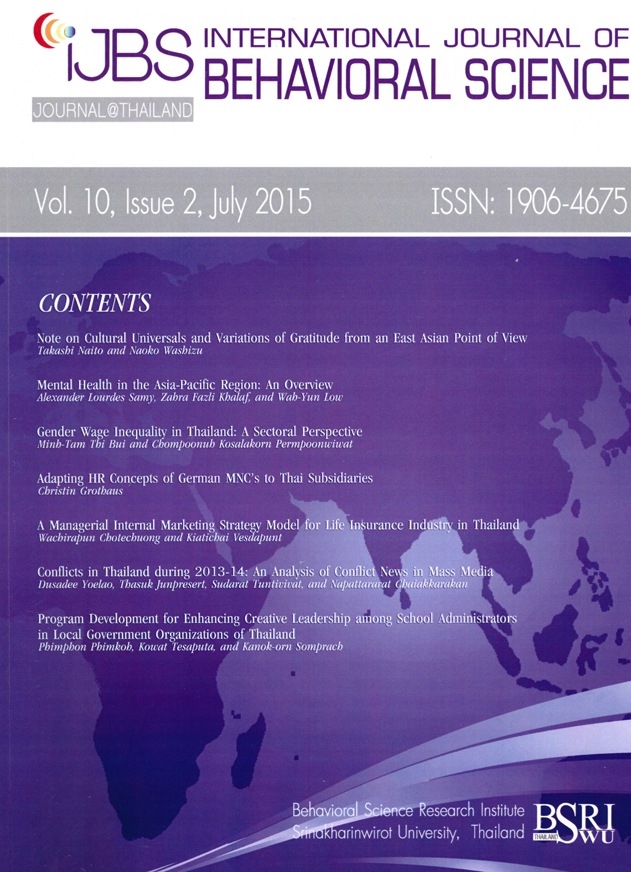Gender Wage Inequality in Thailand: A Sectoral Perspective
Main Article Content
Abstract
The research examines wage inequality between male and female workers in Thailand. Using Blinder-Oaxaca decomposition technique, wage inequality between male and female workers is partitioned into the unexplained part in their wage gap and the explained part due to differences in their endowments. We found that in general gender wage gap in Thailand has -narrowed down over the last decades from 14 percent in 1996 to 10 percent in 2006 and then 1 percent in 2013. However, the extent of gender discrimination favoring men represented by the unexplained part of the wage gap increased sharply in 2013 after a small decline in 2006. Women, on average, have made greater improvements in education and skills to build up their human capital thus raising their wages but those efforts were eliminated by discrimination. The disaggregation analysis across economic sectors reveals different degrees of discrimination in different industries. Wage inequality was rising even in the female-dominant sectors.
Keywords: gender wage inequality, Blinder-oaxaca decomposition, industry structure, Thailand


